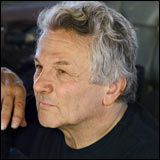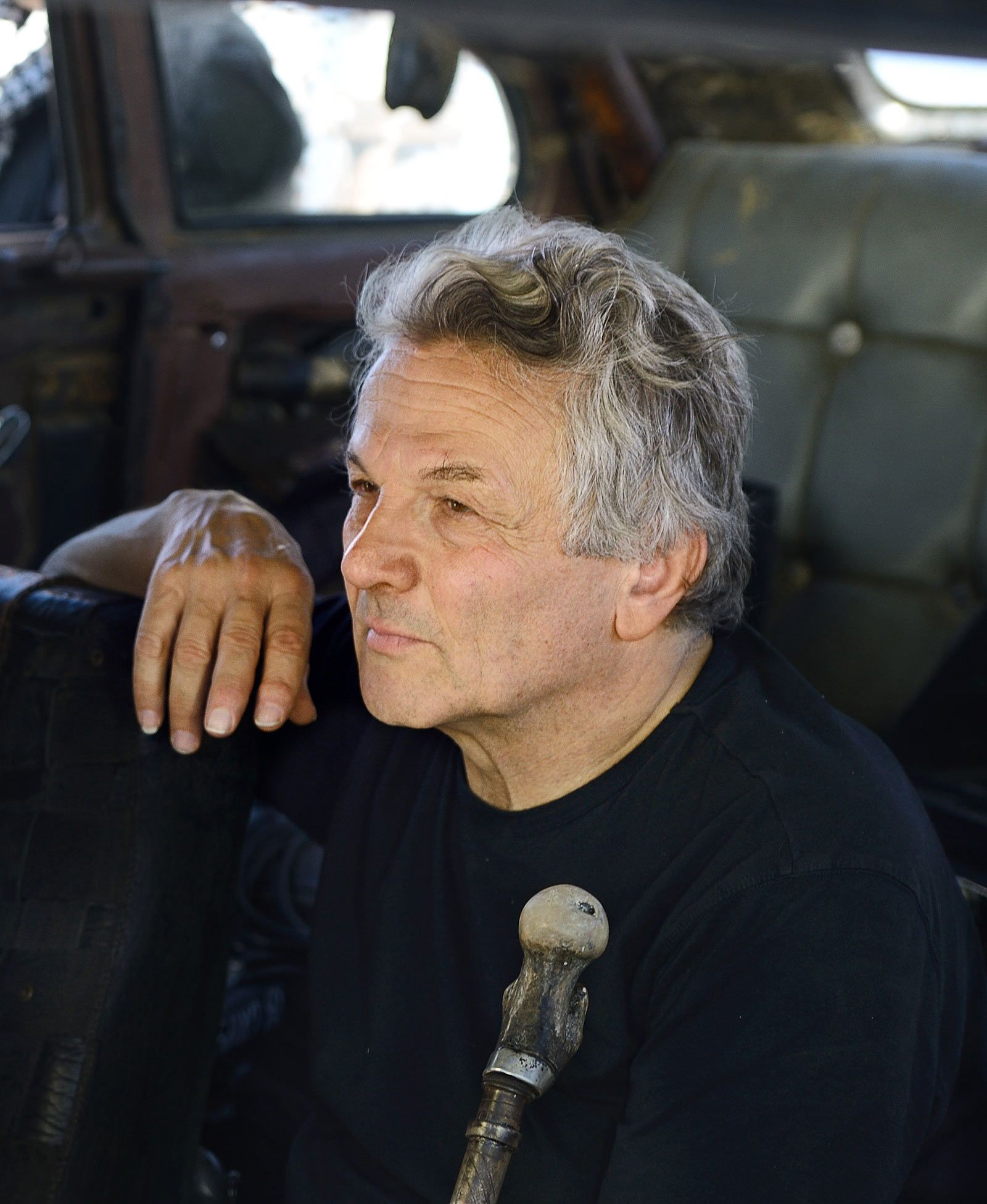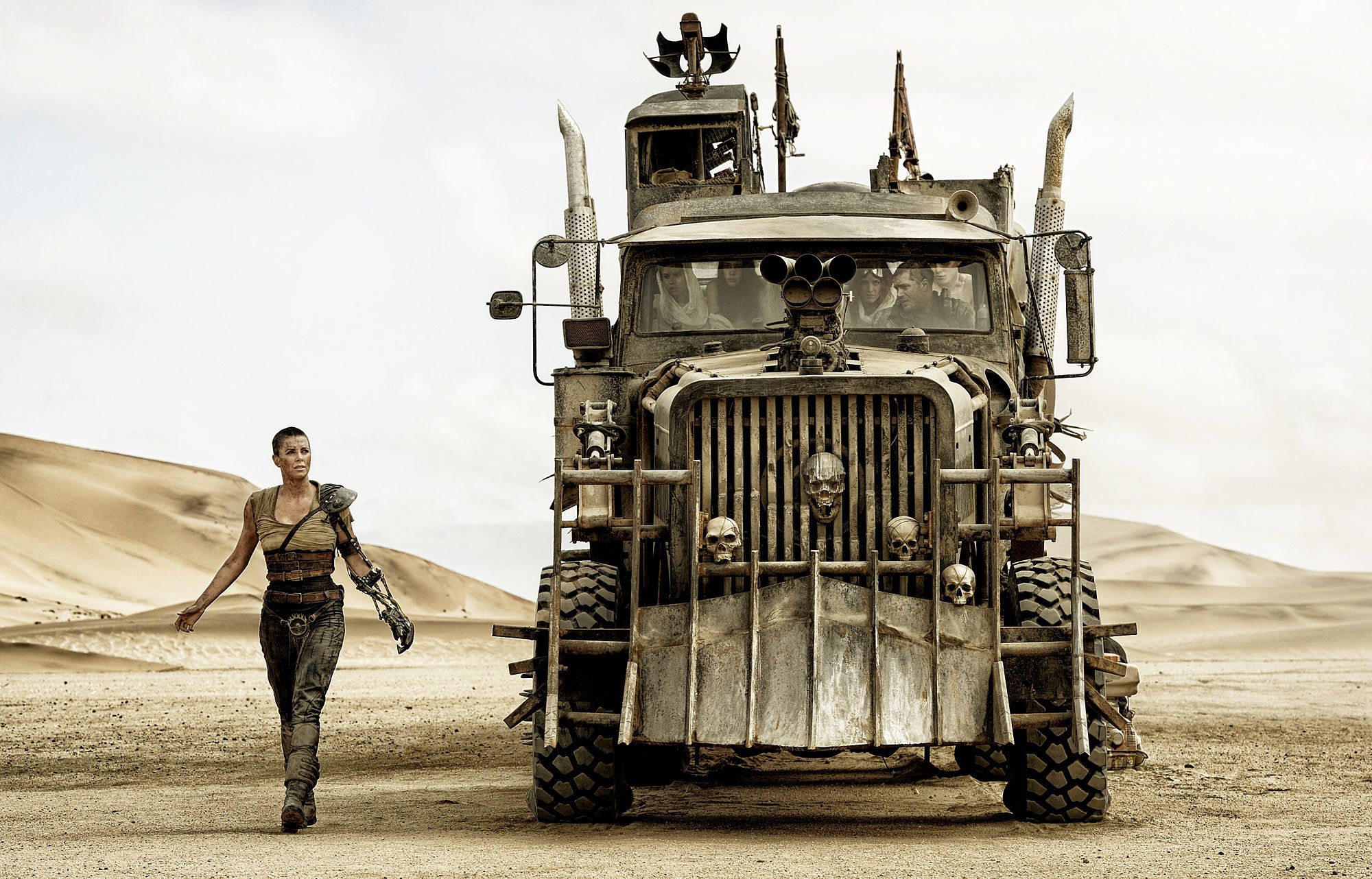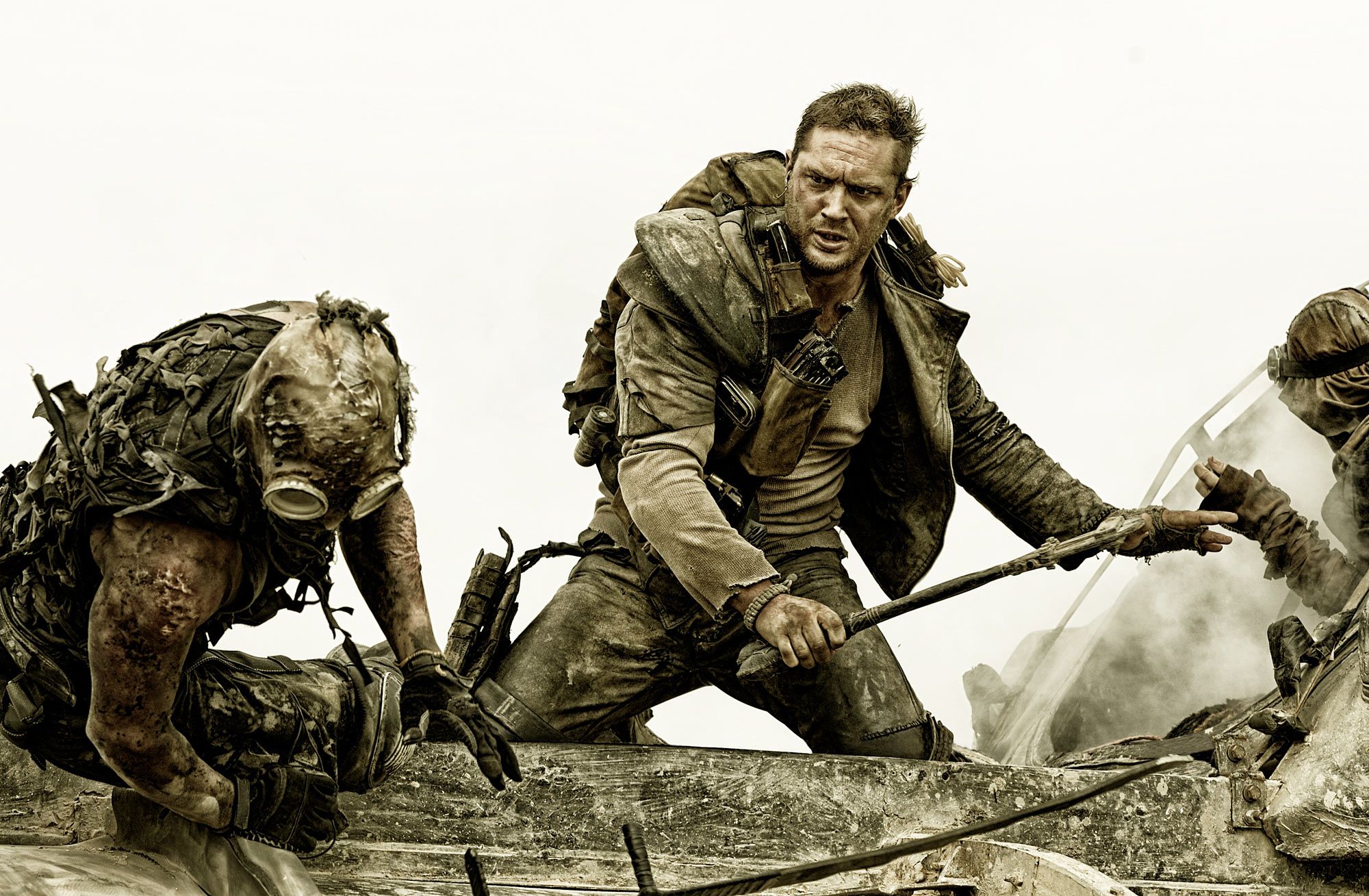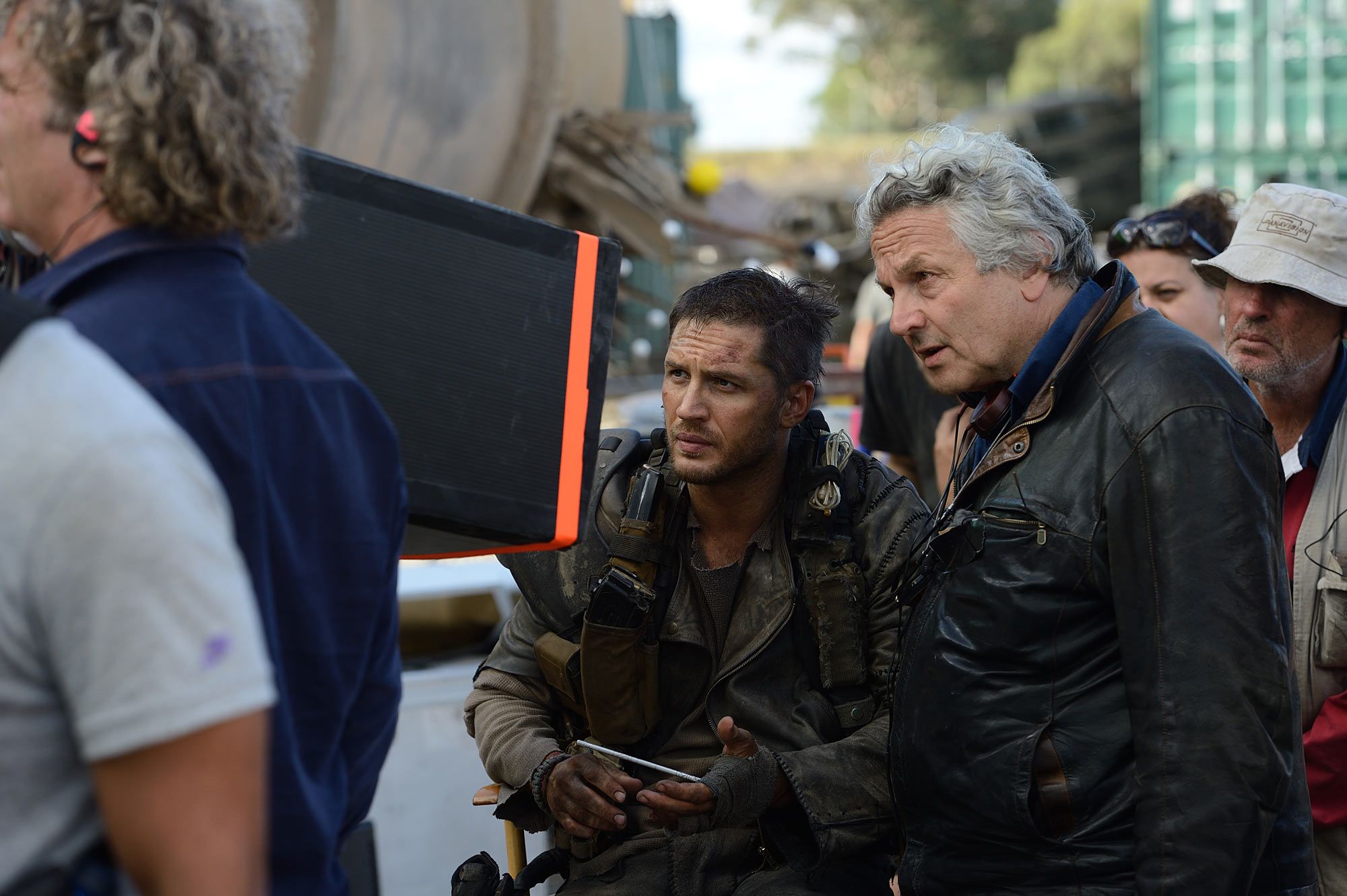Perhaps the only thing more exciting than the modern day revival of iconic movie action hero Max Rockatansky in "Mad Max: Fury Road" is the fact that the filmmaker who dreamed him up in the first place is the one behind the camera once again.
Even a cursory glance at writer/director George Miller's filmography reveals the Australian auteur's remarkable versatility -- along with the three previous "Mad Max" films, he's helmed horror comedy with "The Witches of Eastwick," topical drama with "Lorenzo's Oil," inventive family fare with two "Babe" films and charming CGI animation with "Happy Feet" and its sequel. And now, at age 70, he returns to the behind-the-camera world of post-apocalyptic car chases with a style more muscular and supercharged than ever, even after a 15-year effort to bring the latest installment to the big screen.
Miller joined Spinoff Online for a conversation about the enduring aesthetic impact of the film franchise, inviting comic book illustrators in to help evolve the world of the Road Warrior, and effectively morphing the leading role from its first, indelible star into one of today's most exciting actors.
Spinoff Online: Let's start by talking about your story and design collaboration with the British comic book creator and screenwriter Brendan McCarthy to get Mad Max back in action.
George Miller: Well, once I decided to do a Mad Max story -- first of all, I never intended to do another one. An idea came, or the seeds of an idea. It grew. I kept on pushing it aside. I didn't want to do another one. I had a lot of other things I wanted to do. It grew and grew. And once I decided, "Well, OK, I'll do it," I was thinking about how to make it interesting and different than the other ones. The last thing you want to do was go back and repeat what you've done before. And Brendan had sent me some drawings on Mad Max -- just kind of a collage of drawings on Mad Max -- and I was so struck with them, I thought, you know, it would be really great if he came down from Ireland to Australia. And we said, "OK. Let's map out the story." And then we did.
Review: "Fury Road" is Even Better, Crazier Than Trailers Promise
And its first iteration was an extended storyboard. We worked with Mark Sexton and Peter Pound, who I had worked with before as storyboard artists -- and both comic artists, themselves. And the three of them and I sat in a big room and we laid out the film with 3,500 panels around the room which essentially became the movie. And it was a movie which played almost as a silent movie. People don't speak that much, and as Hitchcock said, "You should try to make movies where they don't have to read the subtitles in Japan." Which is really good.
And me too, you know: I grew up in an isolated rural town, and apart from the Saturday matinee, comics were the big influence to me. They were slightly illicit. You weren't allowed to take them to school. Your parents thought you were somehow not being serious looking at comics. But then you find yourself drawing. And all through my education, I was always drawn to the guy who was usually the best drawer in the class and stuff, so it was all very much part of me, really.
So to work with the three of them and stuff was really, really great. And because this film was most similar to the second movie, "Road Warrior" -- big truck chase across the wasteland -- it was more like that, and Brendan, in particular, is very big on that movie. So he was like that little devil on my shoulder saying, "Don't disappoint me. Don't disappoint me," which is really, really good. So that's how we did that.
And then, [the project] kept on really falling over. And [actor-turned-screenwriter] Nick Lathouris came along, who I had worked with. He had appeared in the first "Mad Max," and he was a great dramaturge. And we dug down deep in the story, and we wrote all the backstories for everything. Not only the characters, but where their guitar came from, where all of the vehicles, every single thing -- even a language. Everything is made up of found objects repurposed, so even language had to be like that.
The aesthetic that you created with the original movies has been a significant source of inspiration for other material, and been also been blatantly ripped off time and again. Probably only "Blade Runner" in the modern sci-fi world has had a similar stylistic impact. How do you want to push that forward, but still be in alignment with what you had done before?
Well, it's a very interesting world to go into because it's like "forward to the past," and you're dealing with a very elemental world. People often call them "Westerns on wheels." They're basically allegories. In terms of the aesthetic, yeah, particularly in video games, and you saw it a lot in movies and music clips, and then manga a lot. And I sort of enjoyed the fact that people were inspired enough by what they saw to riff off that. And I think that's all cultural evolution. In music, whether it be classical or modern music; in art, all the great artists basically did variations on a theme of other great art pieces in many, many cases. You see it in literature. You see it everywhere. So this is part of that.
But once we decided to embark on this movie, it was a very conscious decision not to repeat what we'd done in the past, because it would feel too retro. It had to be uniquely familiar, so we had to go to a lot of trouble to do that. And one thing I noticed was that so many movies set in post-apocalyptic worlds or dystopian worlds tended to be desaturated in color. It almost became a cliché, so we went the other way.
They also would tend to say, "Oh, it's a post apocalyptic world, therefore, it's got to look like a junkyard. Well, that's not the truth about human behavior. If you go to the poorest towns in Africa, you will see the most beautiful objects and toys made out of wire -- just wire or an old Coke can. Even Paleolithic Man was capable of doing those extraordinary rock drawings or paintings. So anything, any found object was repurposed with a very strong aesthetic. A steering wheel, a car, they almost became religious artifacts. And why wouldn't they? Because in a world without books or TV or internet or whatever, these things, particularly the older technology, the more robust mechanics, or technology without micro processors or crash or crumple technology, were more permanent than humans.
So that's why the humans scarify -- why Nux, the Nick Hoult character, scarifies himself with illustrations of vehicles. They sprayed themselves chrome, you know? And so that was very much part of the theme that informed the aesthetic.
Tell me about welcoming Tom Hardy into this world and role of Mad Max, and saying goodbye to Mel Gibson. What qualities do they share in the role, and how are they quite different?
There wasn't much choice in saying goodbye to Mel. Two reasons: one is we started in 2001 with 9/11, the American dollar collapsed against the Australian dollar, so we lost our budget -- or 25 percent of our budget. I moved on to "Happy Feet" for three and a half years, and then by the time we started to re-gather to do "Mad Max," Mel had all that turbulence in his life.
And "Mad Max" is not like "Unforgiven," about an aging warrior. He's a recurring character like the James Bond character. Tom was six weeks-old when we started to shoot the first one! And so when I'd seen "Bronson" and I'd seen some of his other work I was really stunned by the breadth of his work. But most importantly, when he walked into the room, the first time, I felt exactly like the first time I felt about Mel Gibson 30 years before. There was that same sort of immediate lovability, the danger as well. There's something volcanic in both of them. And for a character who says very little, and he's very still, you need that. And I think they give him their charisma.
And also, both are creatures of the theater -- they're both highly, highly skilled actors, both physically and verbally, even though they don't say much. And Tom was a rugby player -- and, you know, a good one because in the fight scenes, he was just such a quick study. Bang, bang, bang, bang [snaps fingers]. And just like Charlize [Theron], because she'd been an accomplished ballet dancer. And that discipline is a very, very -- the precision and so on. And to be honest, there was no one else.
Oh, and the difference is, [Tom's Max] begins much more damaged. He starts off as a wild animal with a garden fork on his face. And to see that progression -- whereas in the [first] "Max" story, he started off as a relatively normal cop -- you see his disintegration here. That's a given now, his post-traumatic stress, and he probably had some military background there as well.
"Mad Max: Fury Road" races into theaters May 14.

